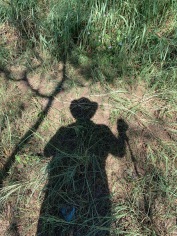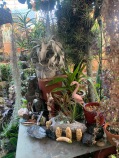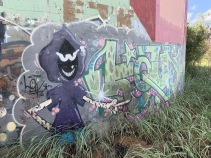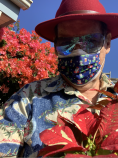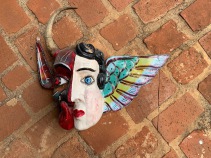The Anatomy of Awe
Awe: a feeling of reverential respect mixed with fear or wonder. Old English ege ‘terror, dread, awe’, replaced in Middle English by forms related to Old Norse agi.
The Red Center, a vast landscape streaked with patches of dusty greens: sage, jade, celadon: of the gums and wattles; outcroppings of irregular red rocks, a giant’s sculpture garden of caterpillars dreaming; settling down into a great silence that allows the body to feel below thought the ultrasonics, the sounds below sound of the land, which cannot be heard through the ear; the silence that includes the various sonics of the birds, the occasional call-and-response thumps of kangaroo; the lightest breezes to gusty winds playing upon the instruments of tree and grass, rock and sand: Ooramina station in the middle of the Australian Northern Territory.
Residential trainings work best where the land itself is the teacher. Living our usual lives we so easily believe the lie we tell ourselves: that we are moving around inside our bodies through the customary landscape. I am me right here and that is all that stuff over there, out there; me inside, stuff outside. You cannot catch yourself in the act of constructing this useful lie.
What is inside and what is outside? Just a brief study of sensory biology reveals that when we feel like we are looking out at the world we are really attending to something that is going on entirely in our brain, a created, constructed impression built out of a selection from an overwhelimg flood of sensory information as well as completely made up stuff. It is our own body we are attending to. The landscape you are looking out at is your own body.
“Matter, motion, mind” was a slogan used by Andrew Taylor Still, founder of osteopathy. Modern sensory biology is beginning to unravel how we construct a world. The fact that the body is situated is primal. It sits in a specific place. No, not ‘sits’ it moves, interacts. Without the movement within the place, the interacting with this stuff (the true nature of which will always be a mystery) the five special senses would be of no use to us. The body first feels itself in the world. Anterior to that is the fact that the body is of the stuff that is the world. Body is built from world stuff and bodies are a component of world; the archaic identity. The body is in the world and the world is in the body.
Similarly the brain is in the body (the site where this world building apparently takes place) and within the brain is the body, a model of the body. This is the body you feel you have (rather perhaps it has you), the body that you feel moving and sensing and all that other body stuff you do. Neuroscientist call this the body schema, a term coined by Sir Henry Head, an English neurologist, in 1911. The movement that you do has to be first done as an emulation in this image of the body that is in the brain, this constantly updating model of the body. It is your body’s joy stick, the origin of movement. The base of the model is its sense of ubiety, (having the quality of being in a specific place). The geography is invited into the body, becomes a part of the body model (special cells in the hippocampus are much involved with inviting the world in). The most basic sense, one most of us are not even aware of having, is the vestibular sense, your body sense of being located, your position in relation to stuff. Your body model, your schema, is literally built from the ground up. Sensors in the soles of your feet, in the joints of foot and ankle, are the foundation.
Ooramina Station, one of the smaller of the family land holdings in the Northern Territory, a mere 450,000 acres, is located near Alice Springs, near the center of the Australian continent. Just putting foot on ground and I feel myself changing. I am a different person. I have a half a day to explore, to find places that seem to speak to me, and the land slows me down. Advice is given, from those who live in this desert, that to survive you must slow down. Because of the heat, they say. But it is not hot, we are in the winter here in September and the desert is cool. It is the land itself telling me to slow down. As I wander about through the brush and trees and rocks, careful to avoid the deceptively pillowy mounds of spinefex grass, the ground pebbled all over with kangaroo spoor, (and the occasional alert and wary kangaroo standing for just a moment to observe the intruder before bounding away into the bush) I begin to feel a growing sense of awe. The ruggedness, the harshness, the boundlessness, the big sky. Later, the rising of the full moon, and when the moon is not dimming the stars the heaven tree abloom astonishes. I feel a constant sense of awe in this place as it seeps into my body, my being and becomes a healing resource.
I reflect on other sites where I have done residential trainings that have inspired awe. On a beach in Hawaii with the solemn honu, the green sea turtle; at Wonder Valley in Californis, walking into the cathedral of sequoias that make speech near impossible: on the western coast of Vancouver Island in Canada in an ancient virgin cedar rain forest; walking across a ropy wrinkled plain of freshly poured lava to where it flows sizzling into the sea. All of these places, awe-injected, have become part of my body and have become my resources.
Walt Whitman looking (with side-curved head), “curious what will come next,” found awe in his body. He cut into his body with the scalpel of poetry. At the same time, half a continent away, A.T. Still was cutting into cadavers (stolen from Indian graves as he recounts in his autobiography) to understand (and be in awe of) the mechanics of the body. Both men came to the same conclusions from entirely different methods, one cutting into the flesh, the other into the soul, both discovered unity. The first tenet of osteopathy, founded by A.T. Still, “The body is a unit; the person is a unit of body, mind, and spirit.” Still used the motto: Movement-Matter-Mind.
A civil war is the larger human body, the human superorganism, the body politic, at war with itself. Before the American Civil War both Whitman and Still were active in abolitionist movements, to free the enslaved body. Still in the Kansas legislature fought to make Kansas a free state. During the war Whitman volunteered as a nurse in Army hospitals and Still, along with fighting, was also a hospital surgeon. Fighting to reunite the splintered body politic and working to help heal the shattered bodies of soldiers could not but have inspired these two men to look differently upon the body, a desire to heal the rift. A great and terrible war calls up the awe of terror and dread.
One can be awestruck by many things: the heavens, the ocean, a stunning landscape, acts of valor, acts of supreme compassion. It can strike quite unexpectedly, as when suddenly “discovering the world in a grain of sand.” The feeling of awe is something that the body does in response to what you are completely incapable of defending yourself against, it is a complete and utter surrender of the self. In this sense awe and curiosity are closely related. Moving into a stance of being curious stops defensiveness. Meeting a person with curiosity allows connection. Be curious and feel your body opening, inviting, vulnerable yet safe, undefended. Whitman in the stanza at the top describes perfectly the stance to take in relation to another that will invite healing into each.
Amplify the feeling of curiosity many fold and you have awe. It was no surprise to me when I read of research be a team led by Jennifer Stellar at Toronto University finding that the experience of awe makes a person more selfless. The research team also found that awe is associated with curiosity and a desire to explore. They also found that the experience of awe was associated with lower levels of interleukin 6, a molecule that promotes inflammation. In other words people who frequently experience things like curiosity and awe are likely healthier.
Imagine sitting with another, the other lying on the massage bed, your hands gently feeling the tension at the back of the neck, up at the top, below the base of the skull. In a mechanical way you apply what you have learned, how to move the head to soften the tissues. Body-as-machine was the common view in the 19th century. Still referred to “the great engine of life.” “The best osteopath,” he wrote, “is the best engineer; the best engineer is the best osteopath.” You are a person of knowledge and skill, an engineer. You know how to fix the problem and it works, the tissues soften.
Or you sit still, not knowing what to do, but as Whitman instructs, “looking with side-curved head curious at what will come next.” You feel your curiosity as a softening in your body, as if your skin is becoming more porous. The separation between you and the other becomes less clear, a diaphanous veil. The feeling of curiosity calls to mind a landscape, an experience of sitting in awe. You sit, holding gentle contact and allow yourself to re-experience this open-faced wonder at the world. You aren’t fixing anything, there is nothing needs any fixing. You sit still, in silent awe, and if any sorting needs to happen the silence does the sorting. “Learn to do nothing with your whole head and body,” wrote David Foster Wallace in his novel Infinite Jest, “and everything will be done by what’s around you.” Dr. Still also wrote, “Let us not be governed today by what we did yesterday, nor tomorrow by what we do today, for day by day we must show progress.” This is his higher dictum.
When you step outside your usual world, open and curious, and have that experience of awe the landscape enters your body and is there as a resource. Learning in the residential training setting is transformational. Relationships are established that often become life-long. When your hands touch another many hands touch with yours and the landscape enters. When you do nothing the world does it for you. When you are curious questions come to mind. When you share your questions in such leaning settings and explore together evolvement happens. Dr. Pauls often said of Ortho-Bionomy that it is an intuitive rather than a scientific way of working. What he meant by this is that one is led by connecting with another more than by their expert knowledge of the mechanics. It is obvious that Dr. Pauls had a deep respect for Dr. Still and often quoted him. Dr. Pauls was a skillful technician but always taught that presence is primary. “Children learn Ortho-Bionomy best,” he often observed. They do not lead with their knowledge but with their ability to connect and with their wonder and curiosity. Students often insist on learning more techniques at a residential training, thinking it is a concentrated time of learning. We instructors often feel obliged to meet this expectation. Dr. Pauls insisted on including a residential portion in the training so there could be the experience of being Ortho-Bionomy together, instead of learning more Ortho-Bionomy. Let the place do the teaching. “Ortho-Bionomy,” he would say, “cannot be taught, it must be caught.” Certainly the techniques can be taught, and taught very well, but the essence must be caught. This is how you catch it. Don’t short yourself in your training process or your continuing education. Plan to place yourself in the hands of awe.
